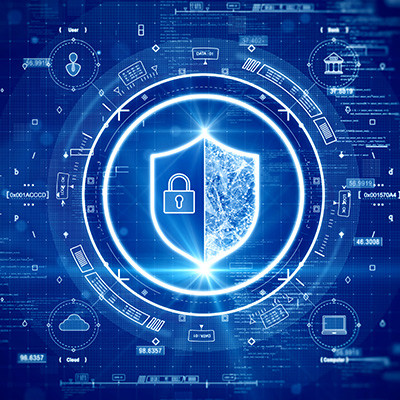Phantom Technology Solutions Blog
The Internet of Things is pervasive in the way that many devices which you might not expect to be connected are, in fact, connected to the Internet. Smart speakers, smartphones, smart appliances, you name it, could potentially be a security threat if left unchecked. This doesn’t just go for businesses, either; even consumer smart devices could leave users vulnerable.
All companies have policies in place which govern how their employees use their technology, so it makes sense that any new employees should be onboarded in accordance with these expectations. Let’s go over how you can make sure your new employees know and understand your organization’s policies as they relate to business technology.
If you find yourself in a position where your business has been hacked, it can be devastating for productivity and efficiency, not to mention the security of your company’s assets—personnel or otherwise. It’s quite easy for even seasoned professionals to expose themselves to these attacks, so how should you respond if you’re the one who has been hacked? That’s what we’re going to discuss today.
The cloud has become a hugely popular resource for businesses of all sizes to lean on for a multitude of needs, many using it for some form of data storage. While using the cloud for this means, however, it is wise for you to do everything available to secure the data you’ve stored there. Let’s go over a few things that we recommend you do to help protect your data.
Email is crucial to the success of any business, but it also might contain sensitive information that is meant for the eyes of your organization—and its clients—only. Most modern email platforms give you tools you need to secure your email solution, so let’s go over how you might enable these features and what they look like.
Let me ask you a question: how do you balance the prevalence of remote work with the fact that a lot of company resources should only be stored on-site? A VPN—or virtual private network—provides the answer for many businesses. Let’s examine what a VPN actually is, and how it helps to protect your business’ data as you access it from outside of your business’ secure network.
The blockchain is a technology that has really taken off in the past couple of years, with many people asking if the same technology behind cryptocurrencies can be applied to other uses and applications. Let’s consider how the blockchain might be used outside of cryptocurrency and in various industries—particularly for security—in the future.
Remote work is now more common than it has ever been before, so we want to ensure that you are informed about the security implications of switching from in-house operations to remote or hybrid operations. Let’s discuss some practical ways you can implement remote work security policies and procedures.
There are so many threats out there that there are positions dedicated within companies to protecting network infrastructures and managing cybersecurity strategy. This alone should be enough to get you to take it seriously. With your employees controlling the “keys to the castle,” i.e., passwords, you need to make sure that you have a solid password strategy in place so as to not inadvertently put your company at risk.
Small businesses have plenty of problems as it is without the added stress that poor security practices can bring about. Small businesses often overlook security because they deem themselves too small to be of any value to a hacker, but this outlook is short-sighted and irresponsible at best. Let’s go over why you’ll need to make security a priority for your business.
Back during the holiday season, the Federal Trade Commission shared some data that showed that members of Generation X, Millennials, and Generation Z are all more likely to fall for online shopping scams than those over the age of 60…and not by a little, either. Those under that age are apparently 86 percent more likely to fall for these scams.
Whether you like it or not, organizations are going to get hacked. It’s the cruel truth. There are just so many individuals and organizations looking to gain unauthorized access and siphon off data and money from businesses, that it is basically impossible to go long stretches of time to not have to confront it in some way. With the threat landscape what it is, companies now offer cyber insurance. Let’s take a quick look at cyber insurance and what you need to know about it.
Unfortunately, some businesses have had to learn the hard way in order to pay attention to their business’ cybersecurity efforts. These cautionary tales aren’t lost on many business owners, but in some cases, they are still ignored. That’s where we come in. Today, we thought we would go through some basic things that any organization needs to know to keep their business safe.
Do you remember the “Hello, I’m a Mac, and I’m a PC” commercials that aired from 2006 to 2009? These ads, which featured actors Justin Long and John Hodgeman as Mac and PC, respectively, were put out by Apple to promote their line of computers, highlighting the advantages that Macs had over the PC. One advantage the ads referenced repeatedly was the idea that Macs “don’t get viruses,” something that research conducted by Elastic Security Labs has disproved beyond any doubt.
Cybersecurity definitely needs to be a point of emphasis for any business who relies on technology, after all if you suffer a data breach, it can have a direct impact on the way your business is viewed by potential customers or it can even have an effect on the way that you are able to operate. In order to keep your business secure online you need to depend on your staff. Like it or not, they are a major part of your business’ cybersecurity system and if they aren’t trained properly and understand their role, your business is low-hanging fruit for hackers.
It’s all well and good for us to recommend that you avoid phishing attacks and infected attachments simply by not clicking on the links in emails and other popular vectors of attacks, but the fact of the matter is that you might need to click on one at some point. In this case, it’s best to check the link before clicking it, and we’re here to offer tools to help you do so.
If you have ever forgotten your wireless router’s password, then you know that a factory reset might be imminent—assuming of course that you have changed your password in the first place (which you should have). For situations like these where you want to avoid a factory reset, you can use this router password repository to find your default credentials.




















